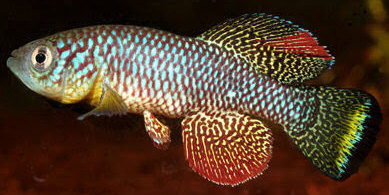Extremely dry – the habitat of killifish
The turquoise killifish inhabits areas characterized by extreme conditions. The species, native to Africa, can survive prolonged periods of drought due to its unique life cycle. During humid periods, they lay their fertilized eggs in the mud. When the waters dry out, the adult fish die, while the embryos remain dormant in the dry mud by entering diapause. Once the rain falls, the embryo’s development continues.
In contrast to other animals, the early embryos of killifish completely disperse into individual cells, which later aggregate to form the body axes and the embryo proper. The killifish species Nothobranchius furzeri has thus adapted its embryogenesis and life cycle to its environmental conditions.
Very different – embryonic development
Prof. Alex Schier's team at the Biozentrum, University of Basel, and researchers from Harvard University and the University of Washington in Seattle have discovered that killifish early embryogenesis differs from other fish species also at the molecular level. “Normally, the dorsal-ventral body axis, i.e. the back and the belly of the fish embryo, is already determined by the mother,” says Schier. “We have discovered that embryonic cells of killifish are not maternally pre-patterned, but self-organize to form the body axis.” In their recent publication in “Science”, the researchers describe how the dorsal-ventral axis is formed in killifish




